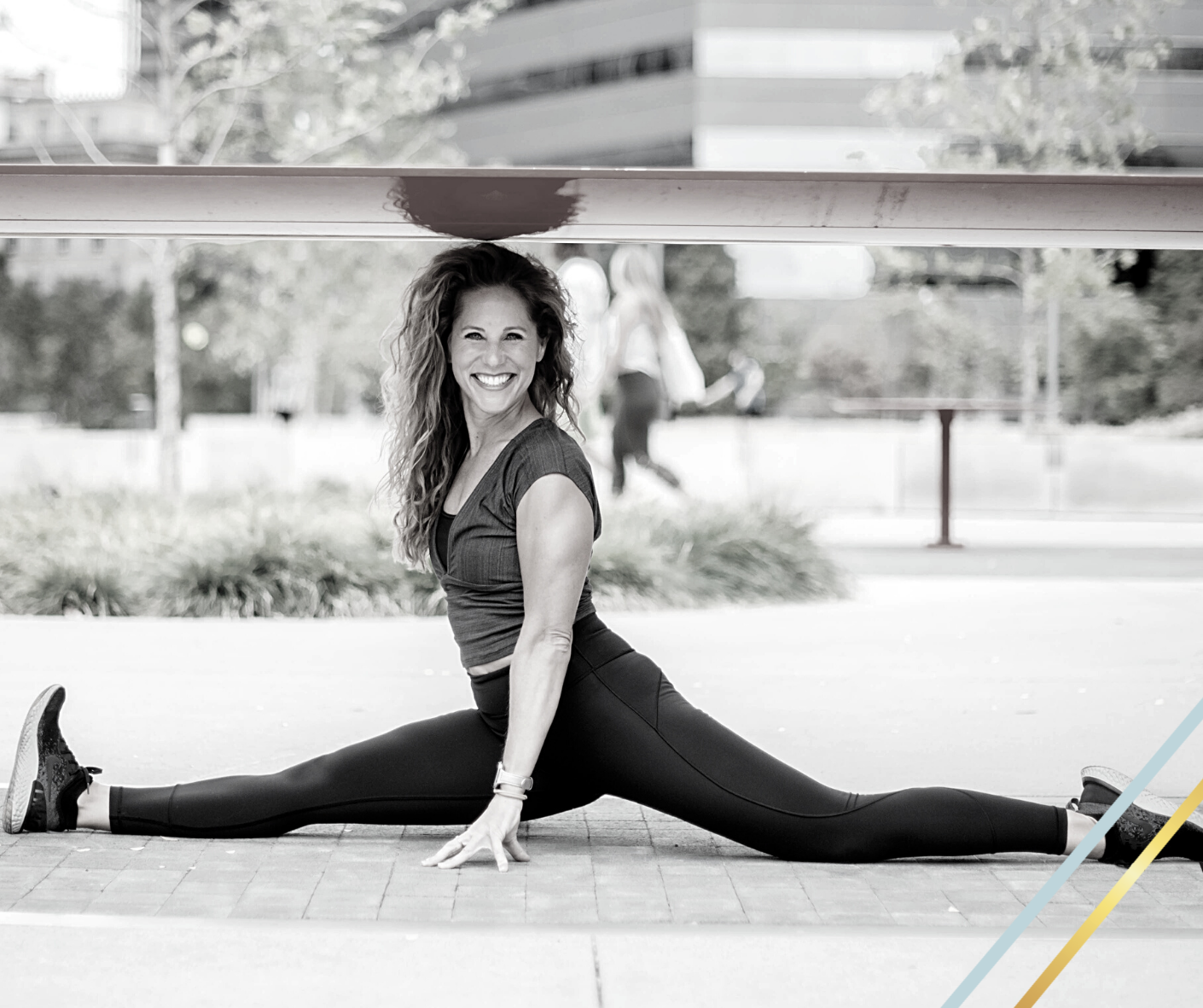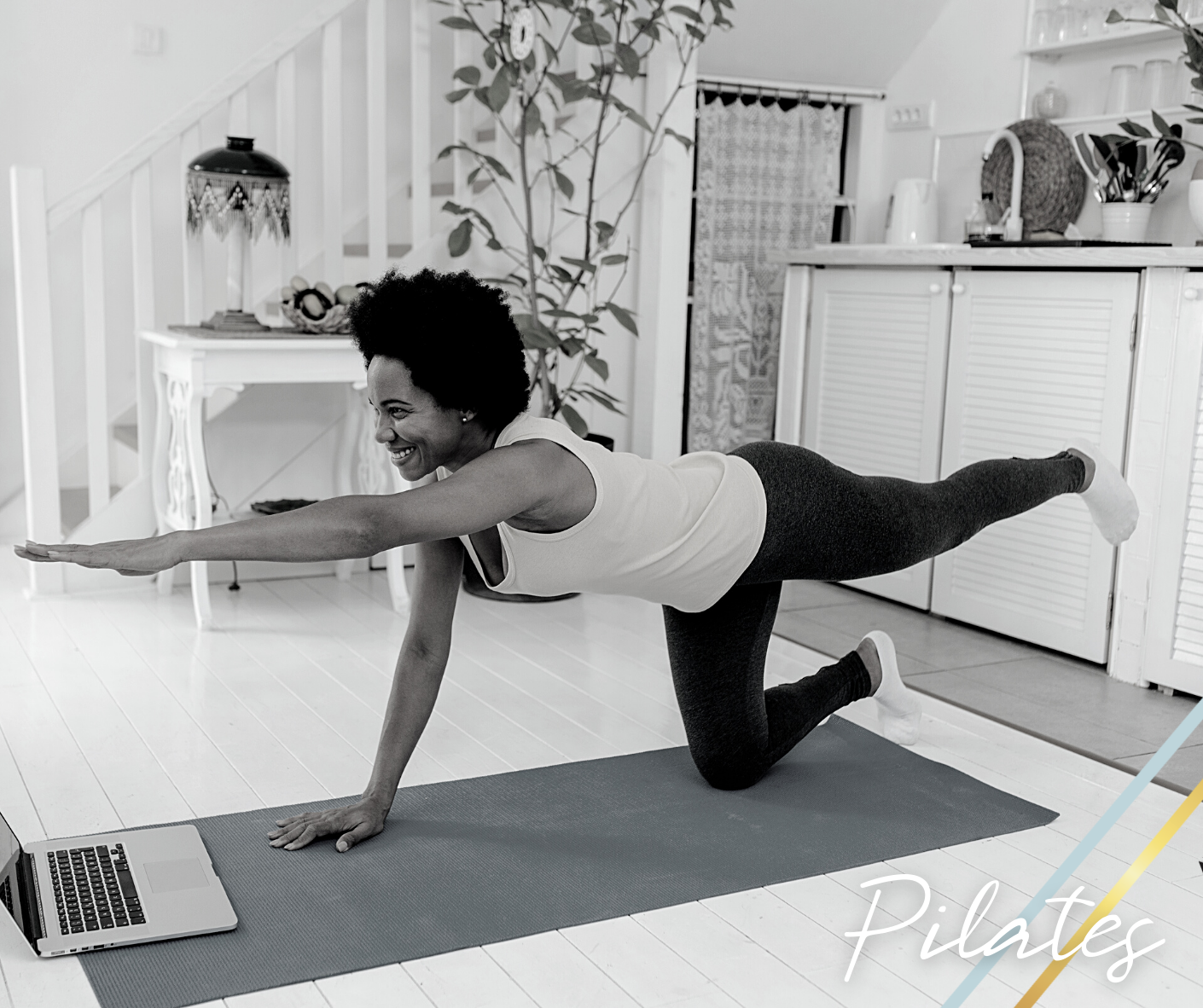
When you make time for therapeutic exercises, you build stability, mobility, and flexibility which can improve your quality of life and help you crush your fitness goals!
Fitness is about more than losing weight. It’s easy to get tunnel vision when you start working out. You have a single goal in mind—often to lose a specific amount of weight—and anything else outside of those goals seems less important. Something you can do maybe once a month when you feel extra motivated.
But what if I told you that those workouts that seem like “extra” actually help you hit your goals faster? That when you make time for what I call “therapeutic exercises,” you improve your overall fitness and quality of life.
Therapeutic exercises include Pilates, yoga, balance, posture work, and stretching—all important forms of exercise that often get overlooked on our quest to lose weight or have a certain body type. Therapeutic exercises benefit you in so many ways that make them so much more than just accessories to your cardio and strength training workouts.
So what’s so great about these therapeutic exercises that make them too important to skip?
In the 1920s, Joseph Pilates created what became known as Pilates—a low-impact form of exercise that builds your strength improves posture, and increases mobility.
Even if you’ve never been to a Pilates class, you’ve likely seen pictures of the Pilates classes that include a strange-looking machine called the Reformer. Those machines aren’t as intimidating as they look though. They’re really designed with your proper alignment and movement in mind. But Pilates can be done on a mat too, without all the machines. And the great thing about the mat classes is they can be done anywhere.

Pilates is a low-impact form of exercise that builds your strength improves posture and increases mobility.
Pilates is the best for strengthening your core—one of the most important muscle groups in your body. A strong core helps you through virtually every movement. And not just in the gym. Whether you’re standing up, bending down, twisting, turning, or even just sitting up, your core muscles provide stability and help you hold those positions.
Having a strong core is what allows you to execute exercises with proper form and posture. In fact, one of the often-cited benefits of Pilates is that it improves posture. It helps improve bad posture habits that come from spending hours sitting in front of a screen all day—as many of us do with our work. As you get stronger through Pilates, your spine starts to align correctly and you see less of the rounded shoulders and slouching that’s common from a weak core and a long time spent sitting.
Plus, a strong core helps prevent and fix one of the most common ailments for American adults —low back pain. Four out of five Americans experience low-back pain at some point in life. And weak core muscles are often at least partly to blame.
Strengthening your core with Pilates will help you perform all other exercises with better form. And a strong core helps you push harder in your workouts too. But Pilates is good for so much more than that—with its benefits for posture and back pain, it can improve your overall quality of life too.
Yoga has been practiced for over 5,000 years and there are so many different ways to practice. But whether you prefer slow-paced yin yoga or a fun, upbeat rocket vinyasa, all forms of yoga have a few things in common: a combination of physical postures with breathing techniques and meditation or relaxation.
The benefits of yoga go beyond physical health. One of the main reasons people love it so much is that it brings you into the present moment to connect with your body and present surroundings. And the result of feeling more present is a decrease in anxiety and stress.

Yoga is a combination of physical postures with breathing techniques and meditation or relaxation.
More studies come out every year that cite the power of yoga to decrease stress and anxiety. One study showed a rapid decrease in anxiety and stress when women stuck to a yoga routine for 3 months. Another found that in 10 weeks yoga not only reduced anxiety but also improved overall quality of life.
But yoga gives you more than mental health benefits. It also promotes better balance and stability.
Yoga is perfect for building stability with all those single-leg postures and flows that have you holding poses for extended periods of time. These postures, or asanas, improve your balance and stability, which carry over into your workouts. Better balance and stability means you can do exercises with better form, get through the movements with more focus, and do more challenging workouts.
So when you think that yoga is too slow and won’t get you the calorie-burning workout you need, just remember how it can improve your overall fitness ability for your next strength and cardio session.
Unless one of your goals is to be able to do a split, you may feel compelled to avoid stretching. It’s slow and it may not even feel good to you at first. Plus, it’s not a calorie-burning exercise, and it doesn’t seem like an activity that will help you achieve your goals. But the benefits of stretching as a cool down after your workout are important to keep your body healthy and able to do your regular workouts.

Stretching after your workout is important to keep your body healthy.
Stretching improves your training outcomes in so many ways:
By preventing injury, improving your flexibility, and increasing your mobility, you make it possible to keep showing up and getting the most out of your workouts. Nothing will stop you from achieving your fitness goals like a muscle or joint injury that could have been prevented by developing your flexibility and mobility. And while yoga and Pilates both contribute to flexibility and mobility, it’s still important to take time to stretch after cardio and strength training days.
There’s actually a lot of overlap in the therapeutic exercises. Each of these forms of exercise will help you improve your flexibility, reduce anxiety, and hit your fitness goals faster. Plus, the improvements in posture, strength, balance, and mobility improve your quality of life outside of fitness too.
While it’s tempting to only focus on lifting weights and cardio to lose weight and get stronger, you miss out on important health benefits if you do this. A healthy and fit lifestyle is about more than just losing weight and looking a certain way. It’s also about feeling happy, healthy, and mobile in our bodies. This is why I work the therapeutic exercises right into the TK training programs for my clients.
So the next time you think about not stretching after a workout or choosing cardio (again) over yoga or pilates, remember that these workouts are just as important for your overall health and fitness.